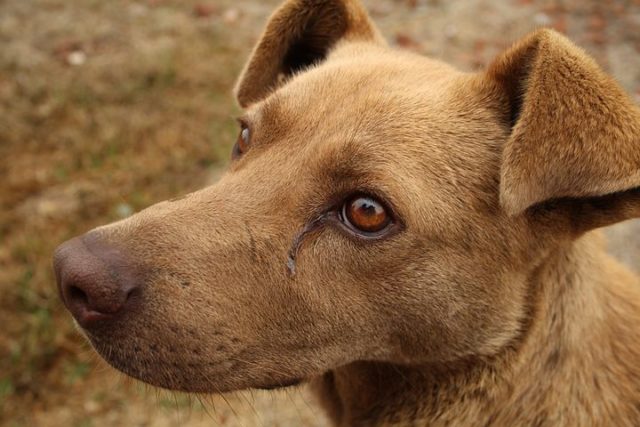According to the CDC, the average adult gets two to three colds per year. Children get even more.
But what about dogs? Are they at risk for the same kinds of viruses that cause our miserable symptoms?
The answer is yes and no.

Very few viruses cross from one species to another. Cold germs tend to stick to their own kind, so the chances of you passing on your symptoms to the family dog (or vice versa) are slim to none. However, dogs have their own viral strains that may cause cold symptoms such as:
- sneezing
- coughing
- congestion
- watery eyes
- runny nose
- lethargy

What Does A Cold Look Like In A Dog?
“Cold” is a general term for a collection of viruses that cause common respiratory symptoms. We can usually tell our own colds from something more serious, but we must rely on our dogs’ behavior to determine just how sick they are.
Dogs suffering from minor colds tend to continue with their normal routines. They eat, they drink, they go outside for potty breaks, they may even play with their toys. They might sleep a bit more or only eat half their breakfast, but their basic behaviors remain the same.
While these dogs can certainly benefit from a little extra TLC, there’s no need to panic.
“Encourage your dog to rest, drink, and eat so his immune system has the resources to fight off the infection,” writes veterinarian, Jennifer Coates. “Wipe your dog’s eyes and nose with a warm, damp cloth to keep him comfortable.”
Since the majority of cold-type illnesses are viral, antibiotics will not help. Dr. Coates also warns against using over-the-counter cold medication unless instructed by your vet. Some of these drugs can be quite dangerous for dogs.

When Should You Be Concerned?
If your dog skips mealtimes, has difficulty breathing, breaks with a fever, or suffers from vomiting and/or diarrhea, it’s time to visit the vet.
Additionally, many of the most common cold symptoms can also be signs of more serious conditions such as kennel cough, canine influenza, bronchitis, or canine distemper.
It’s up to you to use your best judgment. After all, no one knows your dog better than you. If you think it may be something more serious than a common cold, see your veterinarian right away. It’s always better to be safe than sorry when it comes to your furry friend’s health!

If It’s Not A Cold, What Else Could It Be?
There are several conditions that mimic cold symptoms including pneumonia, nasal foreign bodies, inhaled irritants or allergens, tumors, fungal infections, and more.
If your dog’s symptoms are severe, cause significant changes in their behavior, or continue for longer than a week, see your vet to rule out something more serious.

Can You Prevent Your Dog from Getting a Cold?
While there is no vaccine for the common dog cold, you can protect your pup from many other respiratory conditions by making sure they are vaccinated for kennel cough, distemper, and canine influenza.
If you have concerns about vaccinations, discuss the issue with your vet. He or she can help you decide what is best for your individual dog.
You can also help protect your pup by staying away from places where dogs congregate during an outbreak in your community. Remember to also do your part by keeping your dog home if they are experiencing cold-like symptoms.
 Toledo, United States.
Toledo, United States.